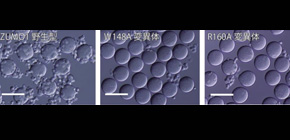
Recognition mechanism behind fertilization of sperm membrane protein IZUMO1 and its counterpart oocyte receptor JUNO clarified
In mammalian fertilization, through sperm–oocyte recognition and sperm-egg membrane fusion, a new individual with genetic information from both parents is produced. In the process of fertilization, factors involving in binding and membrane fusion, in particular have drawn attention as research subjects. IZUMO1, a type 1 sperm membrane protein and JUNO, a Glycosylphosphatidylinositol (GPI)-anchored protein, bond with each other. A lack of one of these proteins prevents fertilization, so it is thought that they play a critical role in egg and sperm recognition.
A group of researchers led by Associate Professor OHTO Umeharu, Specially Appointed Researcher ISHIDA Hanako, and Professor SHIMIZU Toshiyuki at the Graduate School of Pharmaceutical Science, The University of Tokyo, Associate Professor INOUE Naokazu at the Department of Biomolecular Science, Institute of Biomedical Sciences, Fukushima Medical University, and Associate Professor UCHIYAMA Susumu at the Graduate School of Engineering, Osaka University, clarified detailed structures of IZUMO1 and JUNO, which are directly involved in sperm-egg recognition in fertilization.
This group clarified the three-dimensional structures of IZUMO1, JUNO and IZUMO1-JUNO complex. As a result, it was found that IZUMO1 had an elongated rod-shaped structure and JUNO a globular structure. JUNO has a structure similar to a folate receptor (FR), but does not bind to folate.
From this group’s study, it was found that JUNO had a hydrophobic pocket but was not able to bind to folate because a part of amino acid residues, which are important for recognizing folate, were was different, and that side chain of amino acid residues narrowed the pocket, preventing bonding with folate. In IZUMO1-JUNO complex, IZUMO1 and JUNO bound at equal rate, and the central region of IZUMO1 bound to the back side of the hydrophobic pocket through interaction.
It is expected that structural information discovered by this group will lead to the development of contraceptives based on a new mechanism of action that prevents the bond between IZUMO1 and JUNO.
Figure 1
Figure 2
To learn more about this research, please view the full research report entitled “ Structure of IZUMO1-JUNO reveals sperm-oocyte recognition during mammalian fertilization ” at this page of the Nature website.
Related link
